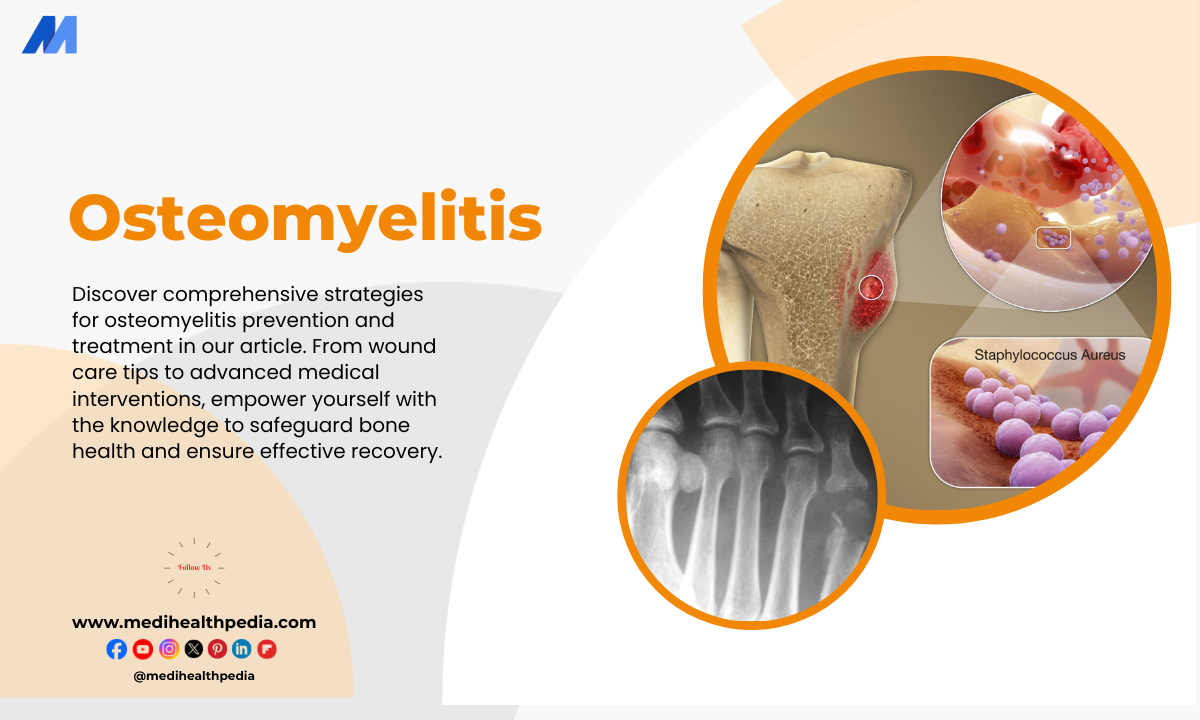Path to Recovery: Understanding the Osteomyelitis Healing Process
Introduction
Osteomyelitis, a word that may sound intimidating, is a serious bone infection that affects thousands of people every year. This bone infection can be painful, debilitating, and, if left untreated, life-threatening. In this article, we will delve into the intricacies of osteomyelitis, discussing its basic investigations, conventional treatments, prevention strategies, the use of herbal medicines, lifestyle modifications, and, finally, a conclusion that highlights the importance of early detection and comprehensive management.

Understanding
Osteomyelitis is an infection of the bone that can be caused by bacteria or, less commonly, fungi. It can affect any bone in the body, but it most often targets the long bones, such as the arms and legs, and the spine. The infection typically begins as an acute condition but can become chronic if not treated promptly.
Basic Investigations
Early diagnosis is crucial for effective management of osteomyelitis. Here are some basic investigations used to confirm the presence of this bone infection:
- Medical History and Physical Examination: Your healthcare provider will first take a detailed medical history to understand your symptoms and potential risk factors. A physical examination may reveal localized pain, swelling, and redness in the affected area.
- Blood Tests: Blood tests, such as a complete blood count (CBC) and inflammatory markers like C-reactive protein (CRP) and erythrocyte sedimentation rate (ESR), can indicate an ongoing infection and inflammation.
- Imaging: X-rays, CT scans, and MRI scans are commonly used to visualize the affected bone. These imaging techniques help identify bone abnormalities, such as bone destruction and the formation of abscesses.
- Biopsy: A bone biopsy involves taking a small sample of the infected bone to identify the causative microorganism and determine the most effective treatment.
Conventional Treatment
Once diagnosed, osteomyelitis often requires aggressive treatment to eliminate the infection and prevent its recurrence. Conventional treatments usually involve the following steps:
- Intravenous Antibiotics: In most cases, patients will be prescribed intravenous (IV) antibiotics for an extended period, typically four to six weeks, to target and eradicate the infectious microorganisms.
- Surgery: Surgical intervention may be necessary, especially in chronic cases or when there is an abscess or dead bone tissue. The procedure involves removing the infected tissue, draining any abscesses, and stabilizing the bone.
- Wound Care: Proper wound care is essential to keep the surgical site clean and free from infection. Dressings may need to be changed regularly, and antibiotics may be applied directly to the wound.
- Supportive Care: Pain management, physical therapy, and other supportive measures may be necessary to help the patient recover and regain function in the affected area.
Prevention
Prevention is always better than cure. To reduce the risk of developing osteomyelitis, consider the following preventive measures:
- Hygiene and Wound Care: Properly clean and dress any open wounds, especially those obtained through injuries or surgery. Keep the wound clean and seek medical attention if signs of infection, such as redness or pus, appear.
- Manage Chronic Conditions: If you have a chronic illness, such as diabetes or sickle cell disease, manage it effectively to reduce your susceptibility to infections.
- Practice Good Oral Hygiene: Dental infections can sometimes lead to osteomyelitis, so maintaining good oral hygiene is crucial.
- Healthy Lifestyle: Maintain a healthy lifestyle by eating a balanced diet, exercising regularly, and avoiding smoking and excessive alcohol consumption. A strong immune system can help your body fight off infections more effectively.
Herbal Medicines
In addition to conventional treatments, some individuals seek alternative or complementary therapies like herbal medicine to support their recovery from osteomyelitis. While herbs can be beneficial in various ways, it is essential to remember that they should not replace standard medical treatments but can be used alongside them. Here are some herbal remedies that have been used traditionally to aid in the management of osteomyelitis:
- Turmeric: Curcumin, the active compound in turmeric, has potent anti-inflammatory and antimicrobial properties. It may help reduce inflammation and combat infection when taken as a supplement or incorporated into your diet.
- Garlic: Garlic has natural antibacterial and anti-inflammatory properties. It can be consumed as part of your daily diet or used topically in a paste to reduce inflammation and promote wound healing.
- Echinacea: Echinacea is known for its immune-boosting properties and can be taken as a supplement or tea to support the immune system’s response to infections.
- Astragalus: This traditional Chinese herb is used for its immunomodulatory effects and may help improve the body’s defense mechanisms against infections.
- Calendula: Calendula is known for its anti-inflammatory properties and can be used topically in the form of ointments or creams to promote wound healing.
Lifestyle Modifications
Incorporating certain lifestyle changes can aid in both the prevention and management of osteomyelitis:
- Good Nutrition: A balanced diet rich in vitamins and minerals is essential for overall health and immune system support. Incorporate foods like fruits, vegetables, lean protein, and whole grains into your diet.
- Regular Exercise: Regular physical activity helps improve circulation and maintains overall health, reducing the risk of infections.
- Smoking Cessation: Smoking impairs the body’s ability to heal and fight infections. Quitting smoking is a significant step in promoting recovery and preventing osteomyelitis.
- Alcohol Moderation: Excessive alcohol consumption can weaken the immune system. Limit alcohol intake to promote overall health.
Conclusion
Osteomyelitis is a challenging condition, but with early detection, appropriate medical treatment, and complementary approaches like herbal medicine and lifestyle modifications, it is possible to manage and prevent it effectively. Remember that self-treatment with herbs should always be done under the guidance of a healthcare professional.
The key takeaway from this article is the importance of seeking immediate medical attention if you suspect osteomyelitis. The sooner it is diagnosed and treated, the better the chances of a successful outcome. In the realm of osteomyelitis, prevention, combined with the right medical care and supportive therapies, is truly the best medicine.

